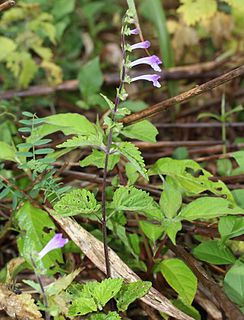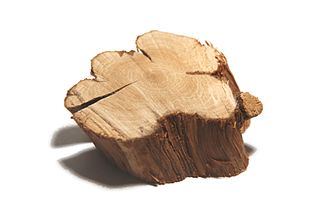
Dianthus is a genus of about 300 species of flowering plants in the family Caryophyllaceae, native mainly to Europe and Asia, with a few species extending south to north Africa, and one species in arctic North America. Common names include carnation, pink and sweet william.
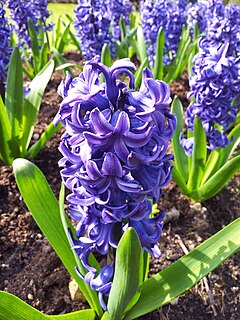
Hyacinthus is a small genus of bulbous, fragrant flowering plants in the family Asparagaceae, subfamily Scilloideae. These are commonly called hyacinths. The genus is native to the eastern Mediterranean.

An alpine garden is a domestic or botanical garden specialising in the collection and cultivation of alpine plants growing naturally at high altitudes around the world, such as in the Caucasus, Pyrenees, Rocky Mountains, Alps, Himalayas and Andes.

Hyacinthus orientalis, is a species of flowering plant in the family Asparagaceae, subfamily Scilloidiae, native to southwestern Asia, southern and central Turkey, northwestern Syria, Lebanon and northern Palestine. It was introduced to Europe in the 16th century. It is widely cultivated everywhere in the temperate world for its strongly fragrant flowers which appear exceptionally early in the season, and frequently forced to flower at Christmas time.
Colutea is a genus of about 25 species of deciduous flowering shrubs in the legume family Fabaceae, growing from 2–5 m tall, native to southern Europe, north Africa and southwest Asia. The leaves are pinnate and light green to glaucous grey-green. The flowers are yellow to orange, pea-shaped and produced in racemes throughout the summer. These are followed by the attractive inflated seed pods which change from pale green to red or copper in colour.
Scutellaria barbata, the barbed skullcap, is a species of flowering plant in the mint family, Lamiaceae. It is native to Asia.

Scutellaria lateriflora, known commonly as blue skullcap, mad dog skullcap, and side-flowering skullcap, is a hardy perennial herb of the mint family, Lamiaceae, native to North America.
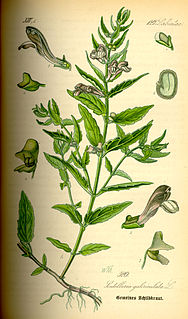
Scutellaria galericulata, the common skullcap, marsh skullcap or hooded skullcap, is a hardy perennial herb native to northern areas of the Northern Hemisphere, including Europe, Asia, and almost all of Canada. It is a member of the mint family. The form is upright and is usually 20 to 45 centimeters in height, sometimes reaching up to 80. It is a wetland-loving species and grows along fens and shorelines. The blue flowers are 1 to 2 centimeters long. The flowers are in pairs and are all on the same side of the stem. The flowers do not appear at the top of the stem.

Liparis loeselii, the fen orchid, yellow widelip orchid, or bog twayblade, is a species of orchid. It is native to Europe, northern Asia, the eastern United States, and eastern Canada. It grows in fens, bogs and dune slacks. It has yellow flowers and glossy yellow-green leaves.
- Liparis loeselii subsp. loeselii - Europe, Russia, Kazakhstan, Canada, United States
- Liparis loeselii subsp. orientalisEfimov - Altay region of Russia
- Liparis loeselii subsp. sachalinensis(Nakai) Efimov - Sakhalin Island in Russia
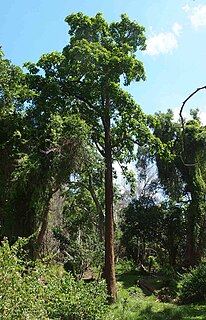
Nauclea orientalis is a species of tree in the Rubiaceae family, native to Southeast Asia, New Guinea, and Australia. It has many common names, including bur tree, canary wood, Leichhardt pine and yellow cheesewood. It grows to a maximum of around 30 m (98 ft) in height and has large glossy leaves. It bears spherical clusters of fragrant flowers that develop into golf ball-sized edible but bitter fruits. The yellowish to orange soft wood is also used for timber and in woodcarving and folk medicine.
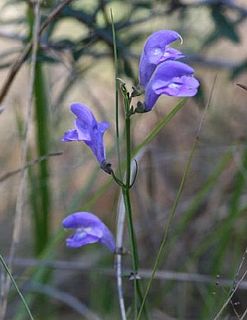
Scutellaria floridana, the Florida skullcap, is a rare species of flowering plant. It is endemic to Florida in the United States, where it is known only from the Florida Panhandle. It is threatened by a number of human activities and its small population sizes make it vulnerable. It is a federally listed threatened species.
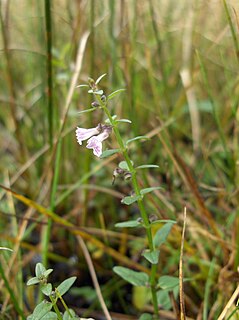
Scutellaria minor, the lesser skullcap, is a species of flowering plant in the family Lamiaceae.
Ivesia rhypara is a species of flowering plant in the rose family known by the common name grimy mousetail, or grimy ivesia. It is native to Oregon and Nevada in the United States.

Clematis orientalis is a deciduous vine or scrambling shrub of the Clematis species, that originates from Asia and Central Europe. Brought to United States as an ornamental plant but escaped cultivation leading to its classification as a noxious weed in some states. Common names for C. orientalis include Chinese clematis, Oriental virginsbower, orange peel, and orange peel clematis.

Merremia umbellata is a thin vine growing a maximum thickness of 2 cm (0.79 in). It has many uses in Indian traditional medicines. The flowers attract bees, butterflies and birds.

Scutellaria alpina, the alpine skullcap, is a species of flowering plant in the mint family, Lamiaceae.

Iris orientalis is a species in the genus Iris, it is also in the subgenus of Limniris and in Series Spuriae. It is a rhizomatous perennial plant, from Turkey and Greece, with white flowers with a yellow mark or blotch. It was also known as Iris ochroleuca for a long time. It is commonly known as yellow banded iris in the U.S. and Turkish iris in the U.K. but also has some other less common names. It is very hardy and has been known to naturalize in various countries. It is widely cultivated as an ornamental plant in temperate regions.

Iris arenaria is a species in the genus Iris; it is also in the subgenus of Iris and in the Psammiris section. It is a rhizomatous perennial, from Central Europe, found in Hungary, Austria, Romania, Czech Republic and Ukraine. It has grass-like leaves, a short stem and pale yellow flowers. It has had a mixed origin and was once Iris humilis subsp. arenaria, a subspecies of Iris humilis, until it was reclassified as a separate species. But many sources still state that it is either a synonym or subspecies of Iris humilis. It is cultivated as an ornamental plant in temperate regions.

Scutellaria brachyspica is a species of flowering plant in the mint family (Lamiaceae). It is endemic to Japan, where it is found on the islands of Honshu and Shikoku. It is a common species in Japan. Its natural habitat is in is in forest edges in hilly areas.



